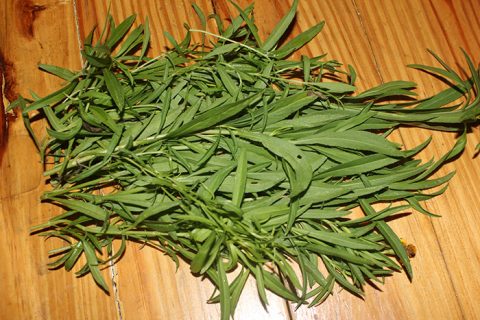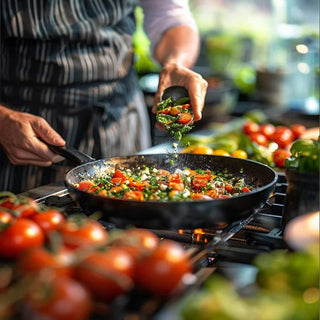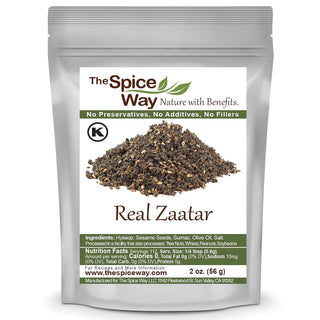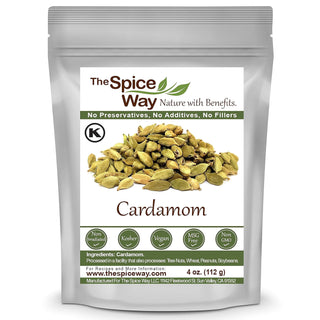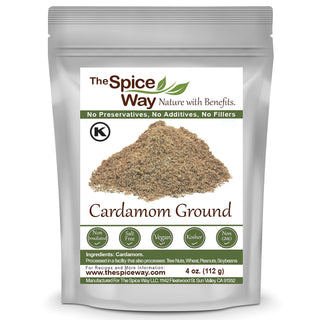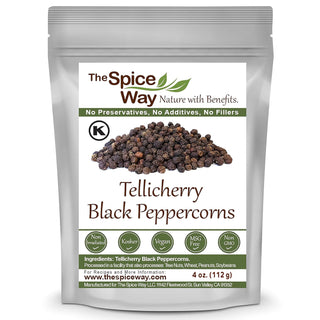Few herbs offer the subtle sophistication of tarragon when it comes to elevating everyday cooking. Known for its slightly sweet, licorice-like flavor, tarragon is a staple in many European cuisines, particularly French, and is slowly gaining recognition in the kitchen worldwide. But what exactly makes this feathery green herb so special? Explore why tarragon deserves a place in your spice rack or herb garden.
What Is Tarragon?
Tarragon (Artemisia dracunculus) is a perennial herb belonging to the sunflower family. The most commonly used variety in cooking is French tarragon, prized for its soft leaves and distinctive, aromatic flavor. There's also Russian Tarragon, which is hardier but milder and sometimes slightly bitter, making it less desirable for culinary use.
Flavor Profile and Aroma
Tarragon's unique flavor is often described as a mix of sweet anise and mild vanilla with a touch of pepper. Its aroma is fragrant, fresh, and herbal, with faint licorice notes. This unusual yet pleasant flavor makes tarragon a standout in delicate dishes where bold herbs might overpower more subtle ingredients.
Health Benefits of Tarragon
Tarragon is not just about taste—it brings along a variety of health benefits:
-
Digestive aid: Traditionally, Tarragon has been used to stimulate appetite and relieve digestive issues.
-
Antioxidants: They contain compounds that help fight oxidative stress and inflammation.
-
Sleep support: Some cultures have used tarragon as a mild sedative to improve sleep quality.
-
Blood sugar control: Preliminary studies suggest it may help regulate blood sugar levels when used regularly.
While it’s not a miracle cure, incorporating tarragon into a balanced diet can contribute to overall wellness.
How to Use Tarragon in Cooking?
Tarragon shines in fresh and dried forms, although the fresh herb delivers a more vibrant flavor. Here are some popular culinary uses:
1. Sauces and Dressings
Tarragon is a key ingredient in béarnaise sauce, a French classic often served with steak or vegetables. It also works beautifully in vinaigrettes, creamy salad dressings, and mayonnaise-based sauces.
2. Poultry and Fish
Its light, slightly sweet flavor complements delicate proteins like chicken, turkey, and white fish. Rub it onto meats before roasting or stir it into a pan sauce after cooking.
3. Eggs and Dairy Dishes
Try tarragon in scrambled eggs, omelets, or quiches for an aromatic twist. It also adds depth to cheese-based dishes like soufflés or gratins.
4. Soups and Stews
Add tarragon toward the end of cooking in creamy soups or light stews. It pairs well with potatoes, carrots, leeks, and mushrooms.
5. Vinegars and Infusions
You can infuse vinegar with fresh tarragon to create a flavorful base for marinades or salad dressings. Simply steep tarragon sprigs in a bottle of white wine vinegar for a few weeks.
Tips for Storing and Cooking
-
Fresh tarragon should be stored in the refrigerator, wrapped in a damp paper towel inside a plastic bag. It typically lasts up to five days.
-
Dried tarragon can be kept in an airtight container in a cool, dark place for up to six months.
-
Use dried tarragon sparingly—its flavor is more concentrated than fresh.
-
Add fresh tarragon toward the end of cooking to preserve its delicate taste.
Pairing Suggestions
Tarragon pairs exceptionally well with:
-
Lemon and mustard
-
White wine and cream
-
Asparagus, peas, and green beans
-
Chives, parsley, and dill
-
Goat cheese and eggs
Its bright, nuanced flavor complements rustic and refined dishes, making it versatile.
Growing Tarragon at Home
If you enjoy gardening, growing tarragon at home can be rewarding. French tarragon does not produce viable seeds, so it must be propagated from cuttings or divided rootstock. It thrives in well-drained soil, with plenty of sunlight and moderate watering.
Once established, it’s relatively low-maintenance and can be harvested from spring through early fall. Trim the tops regularly to encourage bushy growth and prevent flowering, which can reduce flavor.
Tarragon in Different Cuisines
Though most famously used in French cooking, tarragon appears in various culinary traditions across the globe:
French Cuisine
French cooking arguably features the most refined use of tarragon. Beyond its key role in béarnaise sauce, it’s also used in chicken tarragon (poulet à estragon), herb butter, and vinegar salad dressings and marinades.
Russian and Eastern European Cuisine
Russian tarragon, though milder, is often used in pickling and savory baked goods. Interestingly, in Russia and neighboring countries, tarragon is also used to flavor a bright green soda called “Tarkhuna,” a carbonated drink with a slightly sweet, herbal taste.
Middle Eastern and Mediterranean Dishes
In parts of the Middle East, fresh tarragon is used in salads, stews, and rice dishes. It is often paired with lemon and yogurt for a refreshing, earthy flavor. It also appears in herbal mixes or teas intended to soothe digestive discomfort.
Tarragon in Modern Cooking Trends
With today’s growing interest in plant-forward eating and herbal wellness, tarragon, is experiencing a quiet resurgence. Home cooks are rediscovering the joy of using fresh herbs to enhance flavor without excess salt or fat. With its elegant flavor and gentle aroma, Tarragon fits naturally into this shift.
Modern uses of tarragon include:
-
Herb-infused oils for drizzling over grilled vegetables or sourdough.
-
Cocktails and mocktails, which lend a sophisticated, slightly peppery twist.
-
Compound butters, mixed with lemon zest and garlic to top seafood or bread.
As chefs and home cooks seek new ways to explore fresh ingredients, tarragon's versatility and understated beauty make it a perfect addition to creative recipes.
Common Mistakes When Using Tarragon
While tarragon, is easy to use, it does require a gentle touch. Here are a few common mistakes to avoid:
-
Overcooking: Prolonged heat dulls tarragon,’s flavor. When using it fresh, always add it near the end of cooking.
-
Overpowering dishes: Because of its distinct flavor, it should be used in moderation. A little goes a long way.
-
Substituting with the wrong variety: Russian tarragon lacks the aromatic depth of French tarragon and can result in bland or off-tasting dishes.
-
Not tasting as you go: Tarragon,’s flavor intensifies in sauces or stews over time. Taste frequently to ensure balance.
You’ll discover how effortlessly it can elevate a dish by treating tarragon with care and attention.
Final Thoughts:
Tarragon, is one of those herbs that quietly transforms a dish from simple to refined. Whether you’re preparing a comforting home-cooked meal or an elegant dinner for guests, tarragon can introduce a delicate and distinctive flavor.
Its versatility across cuisines, ease of use, and impressive health benefits make it a brilliant addition to any pantry or herb garden. Best of all, it's an herb that invites experimentation—try adding it to familiar dishes, and you may uncover new favorites.
So, if you haven’t already, it’s time to welcome tarragon into your kitchen. You’ll quickly see why this elegant herb has been a cherished secret in the culinary world for centuries.
FAQS
1. What does tarragon taste like?
Tarragon, has a delicate, slightly sweet flavor with hints of licorice or anise. It’s aromatic and pairs well with light dishes like chicken, fish, and creamy sauces.
2. Can I use dried tarragon instead of fresh?
Yes, but use it sparingly—dried tarragon is more concentrated in flavor. Generally, one-third of the dried amount is used when substituting for fresh.
3. How should I store fresh tarragon?
Wrap it in a damp paper towel and store it in a plastic bag in the refrigerator. It typically stays fresh for about 4–5 days.
4. What dishes pair well with tarragon?
Tarragon complements poultry, fish, eggs, creamy sauces, and vinegar-based dressings. It’s also a great addition to herb butters and soups.
5. Is tarragon easy to grow at home?
French tarragon can be grown from cuttings in well-drained soil with plenty of sun. Once established, it’s a low-maintenance herd.
